Symptoms associated with the musculoskeletal system
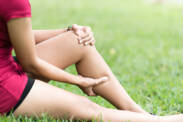
Muscle cramps
Muscle cramps manifest as involuntary muscle contractions. Their cause is not always completely known. They can also occur as a consequence of, and often as the first manifestation of, another disease. They are most common in the elderly and in women during pregnancy.
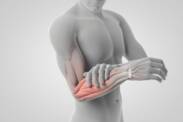
Muscle weakness
It occurs in case of exhaustion, after physical activity, strenuous work. But also with fever or viral disease. In a more serious case, it is a disease at the level of the muscle, but also nerves.
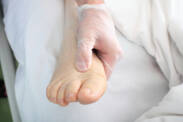
Swelling of the limbs
Prolonged sitting, as well as prolonged standing, can result in swelling of the lower limbs. Other causes may be venous or cardiovascular disease. Swelling can also occur in liver or kidney dysfunction. It is common during pregnancy.
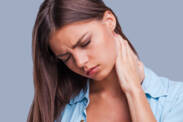
Muscle stiffness
For this symptom, we mainly think of diseases that involve the nervous system - brain damage as a result of a stroke or accident. The cause can also be in an infectious disease. And muscle stiffness also occurs with prolonged stress.
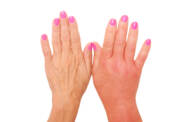
Swollen fingers
Swelling of the toes can be caused by overexertion, an accident, prolonged standing in the case of swollen toes, but also prolonged walking. In pregnancy, swelling is normal. But if other symptoms are associated, it is necessary to think about pre-eclampsia. Swelling typically occurs with a disease called gout, but also with allergies or other diseases.
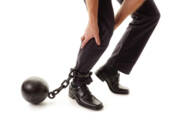
Feeling of heavy legs
Most often, the feeling is a manifestation of diseases of the vessels of the lower extremities. It can be caused by poor lifestyle, female sex, improper footwear, prolonged sitting, standing, etc. Sometimes the cause is neurological problems.
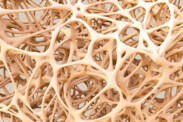
Bone thinning
It would not be correct to look for its cause only in old age. Various diseases and poor lifestyle are cited as secondary causes of bone thinning. Poor dietary constituents and alcohol and smoking have an equally negative influence.

Cold extremities
They are caused by cold weather, quite naturally. They can be the cause of a lack of nutrients, vitamins, but also as a symptom of disease. Most often they are diseases of the blood vessels themselves. They also occur in hormonal problems and also in diabetes.
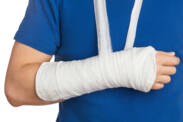
Pathological fracture
A pathological fracture is a fracture that is caused by minimal force. It can occur during normal activity, but also while sitting. Vitamin D deficiency, calcium deficiency, structural disruption, as well as the action of a tumor process are involved in increased bone fragility.
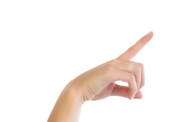
Stubby fingers
Their occurrence is related to race, but also to hereditary predisposition. Why they occur is not fully understood. They occur in diseases of various body systems. For example, in diseases of the cardiovascular, respiratory, digestive or endocrine systems.
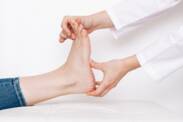
Flat feet
Flatfoot (pes planus) occurs mainly in obese patients. It is the absence of an arch. The foot touches the ground completely.
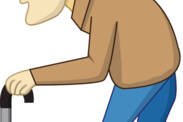
The Hump
Degenerative changes are not the only cause of its occurrence. Also, it is not only older age. Incorrect posture and a negative working environment also contribute to its occurrence. Other diseases can also be the reason for the development of a hump.

Groin Pain
Athletes in particular will be familiar with groin pain. The medical term is inguinal pain, and it is the result of overloading the area or an injury. However, pain in this area can also be caused by certain diseases.
The musculoskeletal system is a complex system in the human body that provides movement of the body. This system consists of the skeleton with its bones, but also the joints that allow the individual bones and limbs to move flexibly, and also the muscles that surround the skeleton and provide it with support, support and strength. In addition to external movement, this apparatus is also responsible for the movement of the organs inside the body, mainly by means of the musculature. This can be striated, i.e. skeletal, but also smooth.
While the striated muscles are controlled by the nervous system and human will, the smooth muscles work without human will. Overall, the musculature is the motor of movement and part of the support system in humans. As such, the skeleton is made up of bones of different types, such as long bones, short bones or flat bones. Thanks to the joints, the bones can be connected flexibly and it is therefore possible to move them in different directions. The musculoskeletal system as a whole is controlled by nerves.
That is why many times the various symptoms and signs that are manifested by the inability to move or problems with movement have their cause in the control of this movement, i.e. in the nerves. However, many diseases are purely musculoskeletal in nature, whether they are diseases of the bones, diseases of the joints or diseases or pathological changes in the muscles. Either their structure is disturbed, or there are problems with the full functionality of a given part of the musculoskeletal system, or even degeneration.
Many times the various symptoms are also visible externally, for example with swelling or degeneration of the structure and shape of the affected area, other times a musculoskeletal problem can be detected only by pain or problems with function. In most cases, musculoskeletal disorders are of the local type, meaning that they only manifest themselves at a specific, circumscribed site. Whole-body diseases are also musculoskeletal problems, but they are usually neurological in nature and caused by nerves.
Swelling on the tele
Within the musculoskeletal system, swelling occurs quite often, most often after a previous injury, bump or fall. Thus, the site may swell locally, but some specific swellings, for example, have other reasons. Swollen fingers can be a symptom of Lyme disease or carpal tunnel syndrome, for example. Sometimes there is also swelling of the smaller joints of the fingers due to arthritis. But joint swelling can also have other causes and reasons.
Although most often of a musculoskeletal nature, such as arthrosis or Bechterev's disease, joints also swell in tuberculosis of the joints, lymphoedema, and sometimes in haemophilia or Lyme disease. General swelling of the limbs can also be a signal for a problem of the cardiovascular system, for example in myocarditis or varicose veins. The most common local swelling of the limb accompanies lymphoedema, more rarely bronchitis or Cushing's syndrome.
Gait disorders
Very often, various gait problems occur as part of musculoskeletal symptoms. Gait disorders can be caused by both joint problems and causes outside the musculoskeletal system, such as neurological problems. Gait problems are very common in fractures or dislocations, but also in cerebral palsy, Alzheimer's disease, arthritis, diabetic neuropathy and also in severe brain damage such as stroke and brain haemorrhage.
Frequent falls, in turn, can be related to muscle problems, for example in myopathy, or to control problems through the nervous system, which occurs in Parkinson's disease, epilepsy or muscular dystrophy. A typical symptom for nerve-type problems that manifest themselves in musculoskeletal conditions is walking with the legs apart. This condition is a symptom for cerebral palsy or for damage to the spinal cord or cerebellum and only rarely has a skeletal origin.
If a person has trouble walking up stairs, it is very often a neurological disease such as diabetic neuropathy or myasthenia gravis, but it can also be a local joint problem, for example in arthritis or arthrosis. Similar joint diseases are also manifested by lameness, especially also with pain, when one joint is damaged. If there is also dry skin and muscle weakness, it may be a vascular ischaemic disease.
Slowed gait is most often due to neurological mobility disorders, whether Parkinson's or Alzheimer's disease, or it may also be a consequence of venous disease, where the movement itself causes localised difficulties in the lower limbs. A very serious symptom is toe tripping, where this is most often a problem indicative of a nerve-type disease, such as myotonic myopathy, polio and cerebellar disorders. But sometimes muscle weakness also manifests itself in this way.
Stiffness and heaviness of movement
Most often people are troubled by stiff joints. These are often symptoms of febrile illnesses, but more often they are related to a joint problem directly, for example in gout, arthritis or lymphoedema. Early joint stiffness is typically seen in arthrosis and Bechterev's disease. Wrist stiffness is also usually one of the symptoms of arthritis; if it has a neurological basis, it may also be carpal tunnel syndrome. In case of previous overstrain, there may also be a stretching of tendons or ligaments.
Muscle stiffness also usually affects the difficulty of movement quite significantly. It can either have an underlying muscular basis, but more often the cause is in the nervous system. For example, cerebral palsy, meningitis or Parkinson's disease are manifested by such stiffness. Restriction of joint mobility is also usually caused by arthritis, arthrosis or other disease of a particular joint. When there is a problem with spinal movement, it is either a spinal cord injury or a disc problem, which is due to Bechterev's disease.
Difficulty initiating movement is typical of both joint disabilities and a consequence of muscle stiffness. Very often this symptom occurs in connection with nervous disorders such as multiple sclerosis, Hungtinton's disease or Parkinson's disease. Problems with rising from a sitting position can also be related to nerve problems, such as incipient polio, but more often it is muscle inflammation or joint involvement, particularly arthritis or arthrosis affecting the hip joints.
Problems with lifting the head can also be a symptom of skeletal muscle weakness, but this manifestation is more related to neurological causes. Either it is a consequence of injuries or paralysis of the nerves in this part of the head, for example, in aseptic meningitis. Difficult movement in a person also occurs if he or she has a feeling of heavy legs, which may be related either to vein diseases such as chronic venous disease or varicose veins, or it may be the manifestation of incipient multiple sclerosis.
Symptoms associated with the musculature
A fairly common muscle-related symptom is muscle weakness. This symptom occurs in different types of diseases and may not be directly related to the muscle. For example, muscle fatigue and weakness is a symptom of diabetic neuropathy, diabetes, Down's syndrome, Lyme disease, cardiovascular disease, but also of arrhythmia, leukaemia, thyroid problems and also a typical symptom of the common flu or excessive fatigue after physical strain on the muscles.
Sometimes there is not weakness, but cramps in the muscles. These accompany diseases of a nervous nature, such as epilepsy or tuberculous meningitis, but also cholera, ischaemic disease of the lower limbs, and are also typical when the muscle is overloaded as a result of excessive sporting activity. Muscle twitching is also typical of both epilepsy and ischaemic disease of the lower limbs, but it is also a possible symptom of Lyme disease or a reaction to external stimuli.
Muscle wasting, also called atrophy, is a symptom of natural ageing and the wear and tear of the body with age, but if it occurs at a younger age, it may be a symptom of cancer, excessive weight loss or muscle myopathy. The opposite is muscle enlargement, but if it occurs only in the calf muscles, it is most often a manifestation of muscular dystrophy, which is a genetic muscle disorder. It can also be a manifestation of Becker muscular dystrophy.
Bone problems
Frequent bone fractures also impair musculoskeletal function, with increased brittleness being a manifestation of calcium deficiency, as well as osteoporosis, bone cancer and decalcification-related diseases such as multiple myeloma or Lobstein's syndrome. Bone thinning, which is usually detected from radiographs, is a serious symptom that may have gastrointestinal or metabolic causes and is related to, for example, haemochromatosis or hyperparathyroidism.
Overall poor bone development may already indicate congenital musculoskeletal defects, such as the inherited disease called Osteogenesis Imperfecta, but it is also a symptom of vitamin D or calcium deficiency. In rarer cases, this symptom also indicates, for example, Marfan's or Lobstein's syndrome. Bone diseases are often associated with a hump, which can occur, for example, as a result of tuberculosis of the bones or osteoporosis, and is particularly characteristic of older people.
Symptoms associated with joints
The joints within the musculoskeletal system are also affected by various types of diseases and symptoms. Joint deformities are common, usually occurring over a longer period of time, and are particularly typical of arthritis, arthrosis, gout or tuberculosis of the bones and joints. They can also sometimes arise from metabolic diseases, for example metabolic syndrome or haemochromatosis, a liver disease. If there is also an inflammatory process in the joints, this symptom is typical of Bechterev's disease.
The joints are also related to, for example, a reduction in body height, which is typical of old age and old age in seniors, but also occurs, for example, in osteoporosis, due to the disruption of intervertebral discs. Bleeding in the joints is already a very serious symptom, which can be related not only directly to an injury or musculoskeletal disease, but also, for example, to bleeding disorders or haemophilia. Very often it is accompanied by swelling of the joint.
Other signs and symptoms
Changes in the temperature of the limbs are also quite common among the signs and symptoms related to the musculoskeletal system. Cold extremities can be a symptom of blood vessel problems or heart problems such as lower limb coronary artery disease or coarctation of the aorta, and are sometimes associated with low blood pressure or failure of thermoregulation of the blood circulation. Hot extremities are typical in febrile infectious diseases or as a consequence of inflammation of the veins.
The unusual shape of the fingers is also related to the limbs, which are referred to as clubbed fingers, but this symptom is usually associated with causes outside the musculoskeletal system. It may be a symptom of cyanosis, multiple heart diseases and defects, or severe cystic fibrosis. As for the lower limbs, often people suffer from flat feet (fallen arches). Here, it is mostly a condition caused by improper wearing of shoes, but sometimes it is also related to overweight and obesity or other orthopaedic disorders.
The enlargement of parts of the body that are not due to swelling can have various causes, from tumour, hormonal or even digestive, for example due to an enlarged liver. Although this is a symptom manifested on the surface of the body, the reasons must be sought mainly in the internal environment of the body. also a visible symptom is the spasmodic bending of the body into a curve, but here too, in most cases, it is a symptom with a basis outside the skeletal system. Often it is a manifestation of an epileptic seizure or tetanus.
A serious problem is a disorder of coordination of movements. This symptom is associated with damage to the spinal cord and nervous system, for example in cerebral palsy or diabetic neuropathy. Sometimes such disorders can also occur with trauma or injury to the brain, or with stroke, when the centre of coordination of movements is temporarily paralysed. Twisting movements are also typical of some neurological diseases, such as cerebral palsy.









